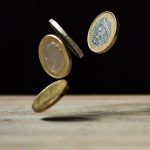What is Inflation?

While day-to-day the spending power of a dollar seems to remain the same, over long periods of time, the value of currency can increase or decrease. As the price of goods in an economy increases, the buying power of an individual dollar (or euro, pound, yen, etc.) decreases proportionally in a process known as inflation.
Price increases, or inflation, can be thought of as the gradual loss of purchasing power. The average price increase of a selection of products and services over time can serve as a proxy for the rate at which buying power declines. A unit of currency effectively buys less as a result of the increase in pricing, which is sometimes stated as a percentage. Deflation, which happens when prices fall and buying power rises, can be compared to inflation.
Also Read: Semiconductor: All the Information You Need
Understanding the Concept of Inflation
Human requirements go beyond simply one or two things, even if it is simple to track price changes over time for certain products. For a comfortable life, people require a wide variety of items as well as a variety of services. Commodities like food grains, metal, and fuel are among them, as are utilities like power and transportation, as well as services like labor, entertainment, and health care.

The objective of measuring inflation is to determine the overall effect of changes in price for a variety of goods and services. It enables a single value representation of the rise in the cost of goods and services over time in an economy.
As prices grow, fewer goods and services may be purchased with a given amount of money. The general public’s cost of living is affected by this loss of purchasing power, which ultimately slows economic growth. According to economists’ general understanding, prolonged inflation happens when a country’s money supply expands faster than its economy.
To counteract this, the monetary authority (like the central bank) implements the appropriate measures to control the money supply and credit in order to maintain acceptable inflation levels and a healthy economy which we will discuss further in this article.
Also Read: What is an Economic System?
The value of money decreased as the money supply grew quickly, which helps to fuel the rapid rise in prices. Depending on what kinds of products and services are being purchased, there are various techniques to measure inflation. It contrasts with deflation, which denotes a broad drop in prices.
Depending on what kinds of products and services are being purchased, there are various techniques to measure inflation. It is the opposite of deflation, which occurs when the inflation rate goes below 0% and represents a broad reduction in prices. Remember that disinflation, a term used to describe a slowing of the (positive) rate of inflation, should not be confused with deflation.
What causes Inflation?
Inflation is caused by a rise in the supply of money, albeit this can happen through a variety of economic causes. The monetary authorities can boost a nation’s money supply by:
- Printing additional currency and distributing it to people.
- Legally depreciating (decreasing) the value of the money that is legal tender.
- Acquiring government bonds from banks on the secondary market in order to create new money as reserve account credits through the banking system (the most common method).
In each of these scenarios, the money ultimately loses its ability to buy things. Three different sorts of inflationary mechanisms can be identified as a result of this: demand-pull inflation, cost-push inflation, and built-in inflation.
What are the Different types of Inflation?

Demand-Pull inflation
Demand-pull inflation is when the economy’s overall demand for goods and services rises more quickly than its ability to produce them. This happens when the availability of money and credit increases. This raises demand, which causes price hikes.
More money leads to happier consumers since more individuals have more money. Consequently, more money is spent, which raises prices. Higher demand and a less adaptable supply lead to a demand-supply mismatch, which raises prices.
Cost-Push Inflation
Cost-push inflation is a result of price increases spreading through the inputs used in production. Costs for all types of intermediate goods increase as more money and credit are directed toward the commodities or other asset markets. This is particularly clear whenever there is a bad economic shock that affects the supply of important commodities.
These changes drive up the price of the final good or service, which in turn drives up consumer pricing. For instance, when the money supply is increased, oil prices experience a speculative boom. This implies that the price of energy may increase and affect consumer prices, which are reflected in various inflation indices.
Also Read: Definition of Economy?
Built-in Inflation
Adaptive expectations, or the notion that individuals anticipate present inflation rates to persist in the future, are related to built-in inflation. People may anticipate an ongoing increase at a similar rate in the future as the price of products and services grows. Workers may therefore request higher costs or wages in order to maintain their standard of living. The cost of goods and services rises as a result of their increased earnings, and this wage-price spiral keeps going as one element drives the other and vice versa.
The concept of Hyper-Inflation

Hyperinflation is the term used in economics to describe circumstances where all products and services experience uncontrollable price increases during a specific time period. In other terms, hyperinflation is inflation that happens very quickly.
Hyperinflation is typically defined as inflation that grows by more than 50% each month. The Monetary Dynamics of Hyperinflation, a book by American economist Phillip Cagan, was the first to examine the economic idea.
How Inflation Works.
Many people link inflation to an increase in the cost of a select number of essential items or services, like oil, or even a certain sector, like real estate. However, inflation only occurs when the general level of pricing for goods and services is growing. The increase is believed to be the result of two main forces: cost-push inflation and demand-pull inflation.
Demand-pull inflation occurs when the economy’s need for goods and services outpaces its capacity to supply them. Inflation is caused by the upward pressure this lack of supply puts on pricing.
Also Read: 4 Economic Concepts Everyone Should Know
Cost-push inflation occurs when the cost of input products and services rises, and the cost of end goods and services also rises, resulting in inflation. A decline in the oil supply and an increase in the price of petroleum, an essential input good, are frequent effects of an oil crisis. Inflation results from the increased pressure that growing gasoline prices place on the cost of finished goods and services.
What are the Benefits of Inflation?

Inflation is thought to boost output when the economy is not operating at full capacity, which means there is unsold labor or untapped resources. Spending increases when there are more dollars available, which increases aggregate demand. In order to meet increasing demand, production must increase.
Also Read: What is an Economic System?
According to British economist John Maynard Keynes, some inflation is required to avoid the paradox of thrift. According to this paradox, if consumer prices are continually permitted to decrease because the nation is being too productive, people will learn to put off their purchases in order to wait for a better offer. The overall result of this conundrum is a decrease in aggregate demand, which results in decreased output, job losses, and a deteriorating economy.
Additionally, debtors benefit from inflation because they can return their loans with funds that are less valuable than the funds they borrowed. This promotes borrowing and lending, which boosts expenditure on all levels once more.
In the past, economists thought that inflation and unemployment had an inverse connection and that rising unemployment could be countered by rising inflation. The renowned Phillips curve defined this relationship. When the United States faced stagflation in the 1970s, the Phillips curve suffered a degree of discredit.
How to Measure Inflation.
Typically, changes in a price index are used to calculate the inflation rate. The most widely used price index in the United States is the Consumer Price Index (CPI). It is a measurement of the typical change in price over time for a typical group of consumer products and services called a “market basket.”
The price of a market basket in a given year is divided by the price of the same basket in the base year to determine the CPI. By computing the percentage change in the CPI from one point in time to another, you can determine the inflation rate. For the twelve months spanning November 2020 to November 2021, the Consumer Price Index for All Urban Consumers (CPI-U) increased by 6.8%, the highest 12-month increase since the period ending in June 1982.
THANKS FOR READING
FAQ’s about Inflation
What happens during inflation?
The main cost of inflation is the loss of real income, which occurs when prices rise unevenly and cause some customers’ buying power to decline. For both those who receive and pay fixed interest rates, inflation might over time affect their ability to make purchases.
Is inflation good or bad?
Some economists contend that a modest amount of inflation might stimulate economic growth, despite the fact that large inflation is widely seen as negative. Deflation, a scenario where prices tend to drop, is the reverse of inflation. Based on the Consumer Price Index, the Federal Reserve seeks to maintain inflation at 2%. (CPI).
Who will suffer the most from inflation?
Groups from the business class are the most affected by inflation.
Do house prices increase with inflation?
Owners will experience appreciation when housing values grow in line with inflation. According to Freddie Mac, the country is about 3.8 million units short of demand, which has resulted in increasing pressure on prices. Long-term owners have already seen their properties’ values rise faster than at any point in recent memory.
Should I pay off my mortgage during inflation?
According to Boston University economist Laurence Kotlikoff, owning a home with a mortgage offers even more security. In a conventional mortgage, the same monthly payment is made over a 15- or 30-year period. Kotlikoff claims that if inflation gets out of hand, “you get to pay back in watered-down dollars.”
What should I invest in during inflation?
Moving through asset classes, treasury inflation-protected securities, which are bonds intended to preserve investors’ buying power by rising prices, are one secure choice for investors. A TIPS, which is backed by the US government, adjusts its primary value to account for inflation.
Why is inflation so high now?
According to experts, three primary factors—rapidly growing labour costs, energy prices, and interest rates—are presently driving much of the price rise. Every one of them raises the price of common consumer products, and it will take a complicated web of forces to get things back to how they were before the outbreak.




